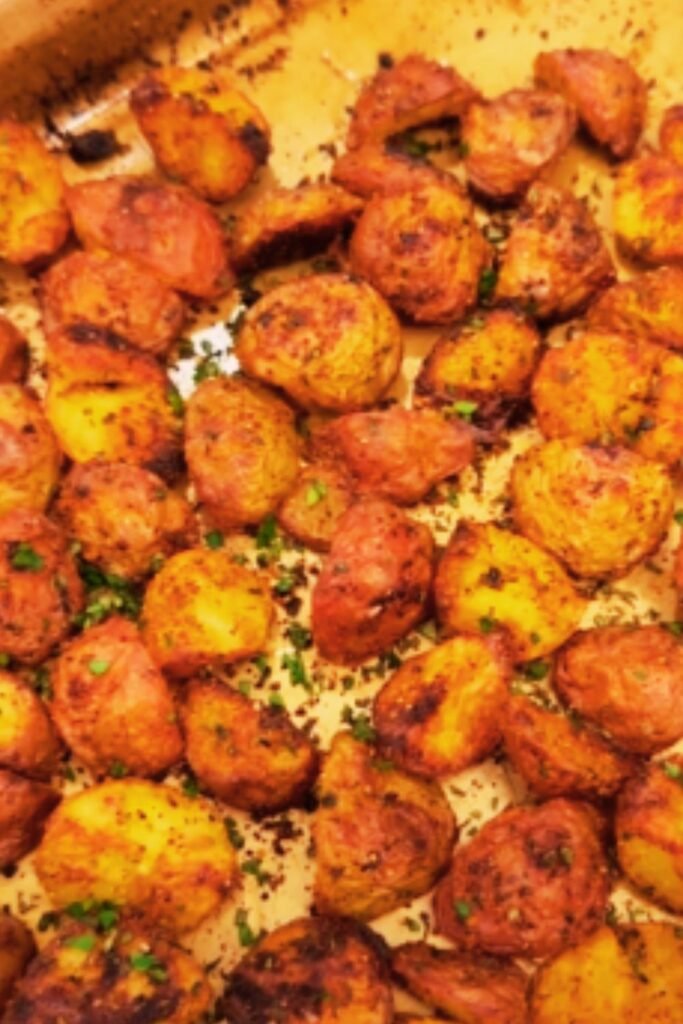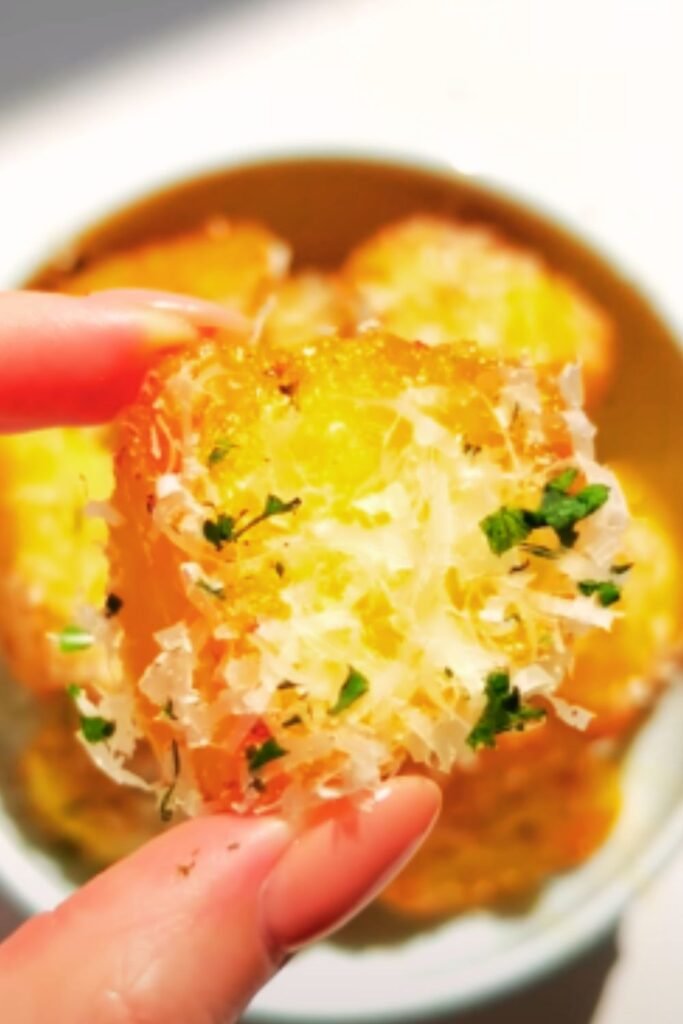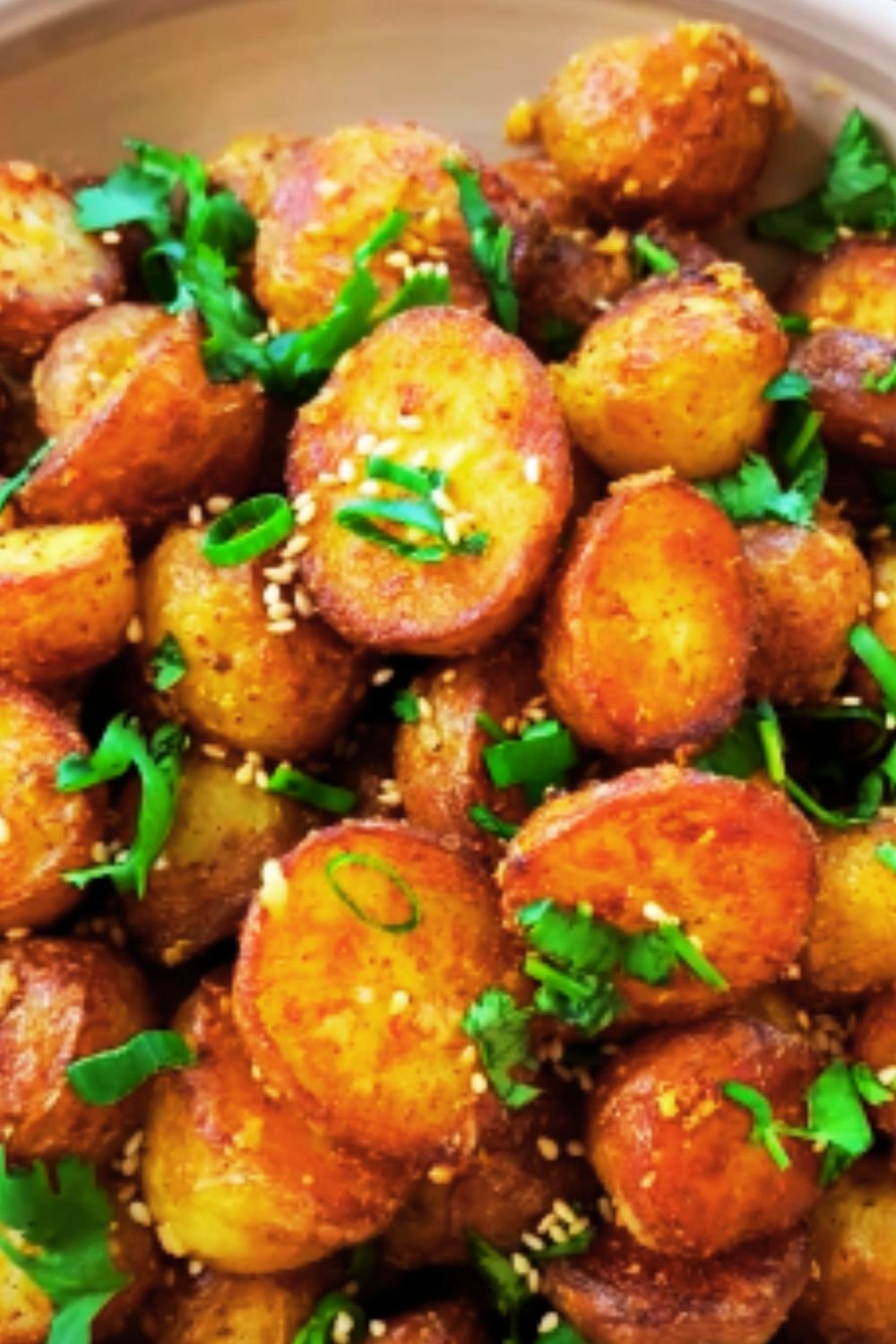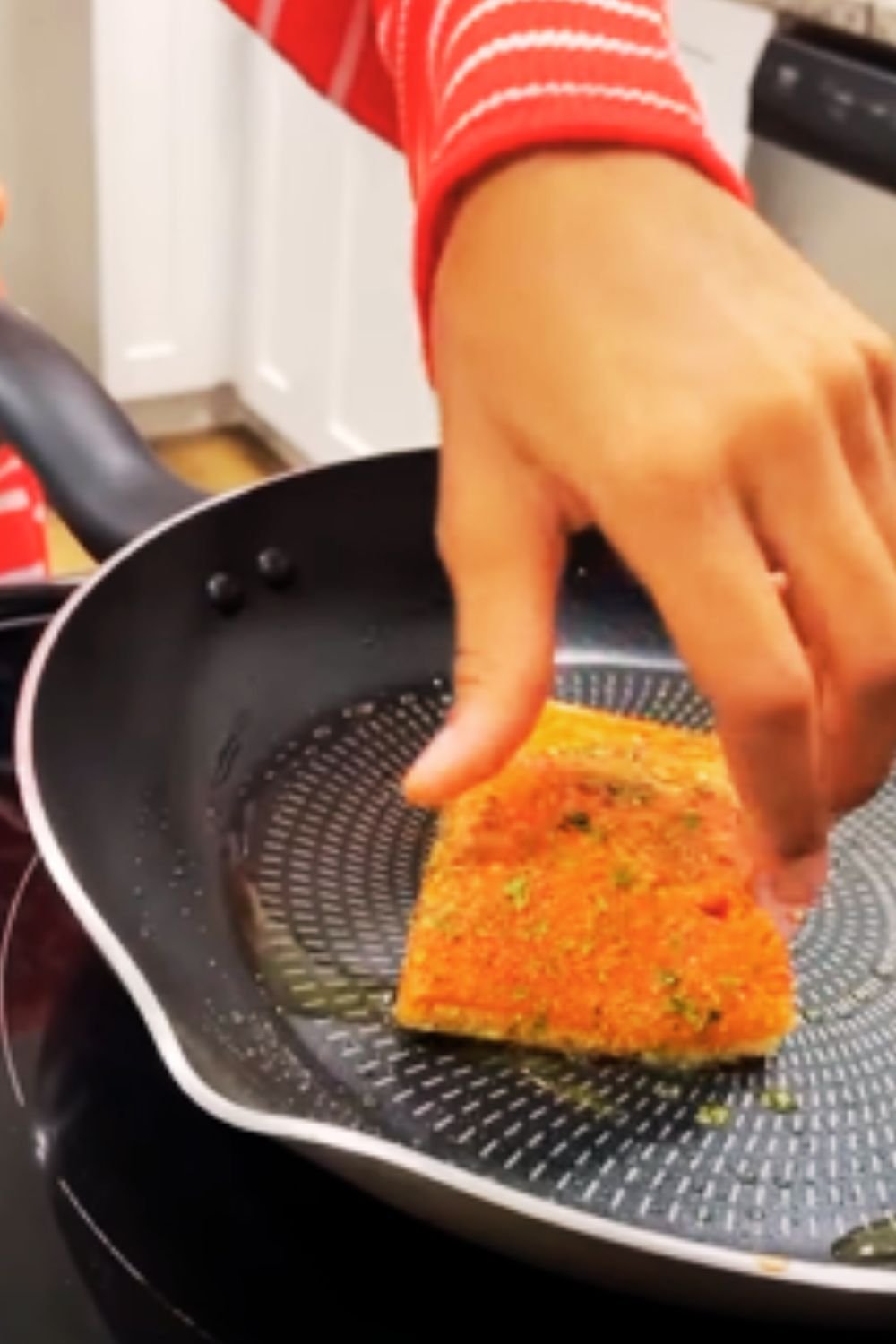There’s something magical about the perfect roast potato. That impossibly crispy exterior giving way to a fluffy, cloud-like interior has been the highlight of countless Sunday dinners in my home. After years of experimenting with different methods and techniques, I’ve finally cracked the code to what I confidently call the best crispy roast potatoes ever. This isn’t just another potato recipe—it’s the culmination of kitchen failures, successes, and obsessive potato research that has led me to a foolproof method that delivers spectacular results every single time.
The Science Behind Perfect Roast Potatoes
What separates a merely good roast potato from a transcendent one? It all comes down to understanding the science of what makes potatoes crisp up in the first place.
The magic of the perfect roast potato happens at the intersection of these three factors:
Starch gelatinization: When potatoes are parboiled, the starch molecules absorb water and swell. This creates the foundation for that fluffy interior we’re after.
Surface area maximization: Roughing up the potato surface after parboiling creates more surface area for fat to cling to and for Maillard reactions to occur.
Maillard reaction: This is the chemical reaction between amino acids and reducing sugars that gives browned food its distinctive flavor. It happens most effectively in a dry environment at high temperatures (above 285°F/140°C).
My method capitalizes on each of these principles to deliver potato perfection. Let’s get into the details.
Choosing the Right Potato
Not all potatoes are created equal when it comes to roasting. The starch content is crucial:
High-starch varieties: These produce the fluffiest interiors but can sometimes fall apart during the parboiling stage if not watched carefully.
Medium-starch varieties: My personal preference for roasting, as they hold their shape while still becoming wonderfully fluffy inside.
Here’s a helpful guide to choosing the right potato:
| Potato Variety | Starch Content | Best For | Texture When Roasted | Notes |
|---|---|---|---|---|
| Russet (Idaho) | High | Very fluffy interiors | Extremely light and fluffy | Can fall apart if overboiled |
| Yukon Gold | Medium-high | All-purpose roasting | Buttery, creamy center with crisp exterior | My top recommendation |
| Maris Piper | Medium-high | Classic roasties | Perfect balance of fluffy and sturdy | Popular in the UK |
| King Edward | Medium-high | Traditional roasts | Excellent crust formation | Seasonal availability |
| Red potatoes | Low | Waxy, holds shape | Less fluffy, more creamy | Not ideal for ultra-crispy results |
| New potatoes | Low | Holds shape well | Creamier, less fluffy | Better for other cooking methods |
I typically reach for Yukon Golds or Maris Pipers if I can find them. Their balance of starch and moisture creates that perfect contrast between crispy exterior and fluffy interior.
The Essential Equipment
Before we dive into the method, let’s make sure you have the right tools for the job:
- A large pot for parboiling
- A colander for draining
- A large, shallow baking tray (aluminum conducts heat better than non-stick)
- A lid or another tray for the shaking step
- A metal spatula or fish slice for turning
- A reliable oven thermometer (oven temperatures can vary significantly)
Having these basic items ready will make the process much smoother.
The Definitive Method
Now, let’s get to the heart of what makes these truly the best crispy roast potatoes ever.
Ingredients:
- 4 lbs (about 2kg) of Yukon Gold or other medium-starch potatoes
- 1/2 cup (120ml) duck fat, goose fat, beef dripping, or olive oil
- 4 tsp kosher salt, divided
- 10 cloves of garlic, unpeeled but lightly crushed
- Several sprigs of rosemary or thyme
- 2 tbsp semolina flour or cornstarch (optional but recommended)
Step 1: Preparation
- Preheat your oven to 450°F (230°C) – and I mean really preheat it. Give it at least 30 minutes to come up to temperature.
- Peel the potatoes and cut them into chunks about 2-3 inches in size. Try to keep them relatively consistent in size.
- Rinse the cut potatoes under cold water to remove excess starch.
Step 2: The Perfect Parboil
The parboiling stage is critical – it’s where we begin building the foundation for ultimate crispiness.
- Place the potatoes in a large pot and cover with cold water.
- Add 2 teaspoons of salt to the water.
- Bring to a boil over high heat, then reduce to a simmer.
- Parboil for exactly 10 minutes from the moment the water starts to simmer.
The potatoes should be soft enough that a knife meets some resistance but can still penetrate. They shouldn’t be falling apart. This stage hydrates the starches in the potato, setting us up for that perfect fluffy interior.
Step 3: The Crucial Roughing Up
This step is where magic begins to happen:
- Drain the potatoes thoroughly in a colander.
- Allow them to steam dry for about 5 minutes.
- Return the potatoes to the empty pot, sprinkle with the semolina flour or cornstarch if using.
- Place a lid on the pot or cover with a plate.
- Holding the lid firmly in place, shake the pot vigorously for about 10 seconds.
When you remove the lid, you should see that the potato surfaces have become rough and fluffy – these ragged edges will transform into the crispiest potato exterior you’ve ever experienced.

Step 4: The Fat Factor
While your potatoes are steaming dry:
- Place your chosen fat in the roasting tray.
- Put the tray in the oven for 5-10 minutes until the fat is smoking hot.
- Carefully remove the tray from the oven.
The smoking hot fat is crucial – it immediately begins to cook the exterior of the potatoes, preventing them from absorbing too much oil and starting the crisping process right away.
Step 5: The Roast
This is where patience becomes a virtue:
- Carefully tip the roughed-up potatoes into the hot fat. They should sizzle immediately.
- Use a spatula to turn them, ensuring each piece is coated in fat.
- Sprinkle with the remaining 2 teaspoons of salt.
- Add the garlic cloves and herb sprigs, tucking them between the potatoes.
- Return the tray to the oven.
- Roast for 30 minutes, then remove and turn each potato.
- Return to the oven for another 30-45 minutes.
The total roasting time will be 60-75 minutes. This might seem long, but it’s necessary for developing that deep golden crust.
Step 6: The Final Touch
- Remove from the oven when the potatoes are deep golden brown and utterly crisp.
- Transfer to a serving dish lined with paper towels to absorb any excess fat.
- Pick out the herb sprigs (they’ll be crispy and can be discarded).
- Squeeze the roasted garlic from their skins and mix with the potatoes if desired.
- Serve immediately while piping hot.

Common Pitfalls and How to Avoid Them
Even with the best method, there are several ways roast potatoes can go wrong. Here’s how to troubleshoot common issues:
| Problem | Cause | Solution |
|---|---|---|
| Potatoes not crispy enough | Oven not hot enough or overcrowded tray | Use an oven thermometer to verify temperature; give potatoes plenty of space |
| Soggy potatoes | Not dried thoroughly after parboiling | Allow extra time for steam drying; use kitchen paper to pat dry if necessary |
| Burnt exterior, raw interior | Oven too hot or cut too large | Lower temperature slightly; ensure consistent sizing |
| Potatoes sticking to the tray | Tray not hot enough before adding potatoes | Ensure fat and tray are smoking hot before adding potatoes |
| Bland flavor | Insufficient seasoning | Season the water, season after roughing up, and consider seasoning again when serving |
| Uneven cooking | Inconsistent potato sizes | Cut potatoes to uniform size; separate smaller pieces to remove earlier if needed |
Flavor Variations
While the classic salt and rosemary version is hard to beat, here are some exciting flavor variations to try once you’ve mastered the basic technique:
Garlic and Parmesan
- Add 1/4 cup grated Parmesan in the last 10 minutes of roasting
- Toss with 2 tablespoons of minced garlic when serving
Smoky Paprika
- Add 2 tablespoons of smoked paprika to the fat before adding potatoes
- Finish with a sprinkle of flaky sea salt
Herb Infusion
- Use a mixture of rosemary, thyme, and sage
- Add a few bay leaves to the roasting pan
Lemon and Oregano
- Add zest of 2 lemons in the last 10 minutes
- Toss with fresh oregano leaves when serving
Truffle Luxe
- Drizzle with 1 tablespoon truffle oil before serving
- Sprinkle with fresh parsley
Remember that the key to any of these variations is to not compromise the basic technique – additions should complement, not interfere with, the essential crispiness.
Make-Ahead Tips
Can you prepare these potatoes in advance? Yes, with some caveats:
You can parboil and rough up the potatoes up to a day in advance. After shaking, allow them to cool completely, then refrigerate in a single layer on a baking sheet, uncovered (this keeps them dry).
When ready to roast, proceed from step 4 with the hot fat, but be aware that coming from cold, they may take an extra 10-15 minutes to reach peak crispness.
I don’t recommend fully roasting these potatoes in advance – they’re at their absolute best straight from the oven. However, if you must, you can roast them 80% of the way, cool, and then finish for 15-20 minutes at high heat just before serving.

Serving Suggestions
These potatoes deserve to be the star of the meal, but they pair beautifully with:
- A perfectly roasted chicken with pan gravy
- Herb-crusted rack of lamb
- Slow-roasted beef with Yorkshire puddings
- Grilled salmon with herb butter
- Roasted vegetables like carrots, parsnips, and brussels sprouts
- A crisp green salad with a sharp vinaigrette to cut through the richness
For condiments, I love to serve these with:
- Homemade aioli
- Herb-infused sour cream
- Rich beef or chicken gravy
- Compound butter with herbs
- Hot English mustard
Storage and Reheating (If You Must)
In the unlikely event that you have leftovers:
- Allow potatoes to cool completely.
- Store in an airtight container in the refrigerator for up to 3 days.
- To reheat, place on a baking sheet in a single layer.
- Reheat in a 400°F (200°C) oven for 15-20 minutes until heated through and crisp again.
Microwaving is the enemy of crispness – avoid it if at all possible!
Nutritional Considerations
Let’s be honest – these are not low-calorie potatoes. But they are worth every delicious calorie. If you’re watching your fat intake, you can reduce the amount of fat to 1/4 cup and still get good results, though not quite as spectacular.
For dietary restrictions:
- These potatoes are naturally gluten-free (if using cornstarch instead of semolina)
- For vegan options, use olive oil or a plant-based fat
- For lower sodium, reduce the salt but consider adding other herbs to boost flavor
Remember, these are a special occasion food – embrace the indulgence when you make them!
Questions & Answers
Q: Why do I need to parboil the potatoes? Can’t I just roast them from raw?
While you technically can roast potatoes from raw, parboiling serves several crucial functions. It hydrates the starches, allowing them to gelatinize, which creates that fluffy interior we’re after. It also allows us to rough up the surface, creating more area for crisping. Raw-roasted potatoes tend to be drier inside and less crispy outside – the contrast is what makes these so special.
Q: Can I use regular table salt instead of kosher salt?
You can, but you’ll need to reduce the quantity by about half since table salt is more concentrated than kosher salt. However, I recommend kosher salt for its pure flavor and the way it adheres to the potatoes. Flaky sea salt is fantastic as a finishing touch.
Q: My potatoes always stick to the pan. How do I prevent this?
Three key factors prevent sticking: a properly heated fat, enough fat to coat the bottom of the pan, and not disturbing the potatoes too early. Make sure your fat is smoking hot before adding the potatoes, and don’t attempt to turn them until they’ve formed a crust (at least 30 minutes into roasting).
Q: Is duck fat really worth it, or can I just use olive oil?
While olive oil works well, animal fats like duck fat or beef dripping do produce superior results in terms of flavor and crispness. They have higher smoke points and impart a richness that’s hard to beat. If you’re making these for a special occasion, I’d say splurge on the duck fat – you’ll taste the difference.
Q: My oven has a convection/fan setting. Should I use it?
Convection can help with crisping, but it also dries out the exterior faster, sometimes before the interior is perfectly cooked. If using convection, reduce the temperature by 25°F (15°C) and check the potatoes about 10 minutes earlier than the recipe suggests.
Q: Can I add the herbs at the beginning of roasting?
You can, but they’ll likely burn during the long roasting process. I prefer to add hardier herbs like rosemary and thyme about halfway through, which allows them to infuse their flavor without burning to bitterness. Very delicate herbs like parsley or chives should only be added after roasting.
Q: Why do my potatoes sometimes end up greasy?
Greasy potatoes usually indicate that either the fat wasn’t hot enough when the potatoes went in, or the potatoes weren’t dry enough after parboiling. Both issues cause the potatoes to absorb fat rather than form a crisp exterior. Make sure your parboiled potatoes have ample time to steam dry, and that your fat is properly preheated.
Final Thoughts
The pursuit of the perfect roast potato might seem trivial to some, but I believe there’s profound joy in mastering even the simplest culinary techniques. These crispy, golden potatoes represent more than just a side dish—they’re a celebration of how attention to detail and understanding the science behind cooking can elevate the everyday to the extraordinary.
What makes these truly the “best” isn’t just their objective deliciousness (though they are objectively delicious), but the fact that they’re accessible to anyone willing to follow the method carefully. No special equipment, no rare ingredients—just patience, attention, and a little bit of science.
So the next time you’re planning a special meal—or even if you just want to make an ordinary Tuesday night feel special—give these potatoes a try. I promise they’ll become a tradition at your table just as they have at mine.


